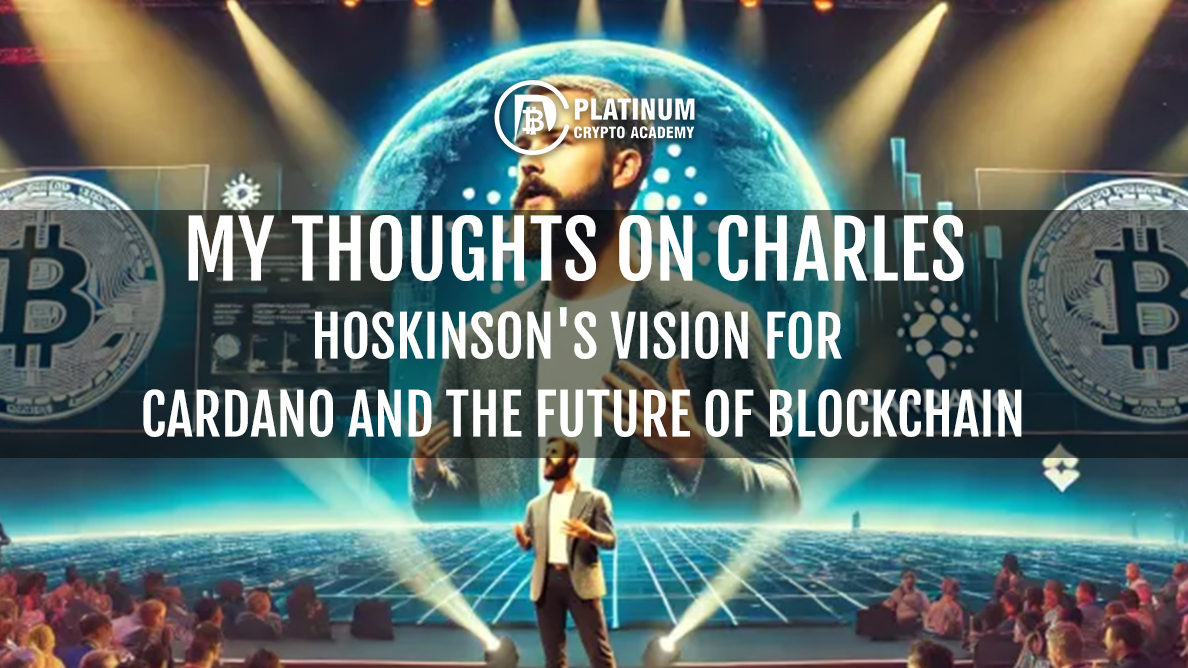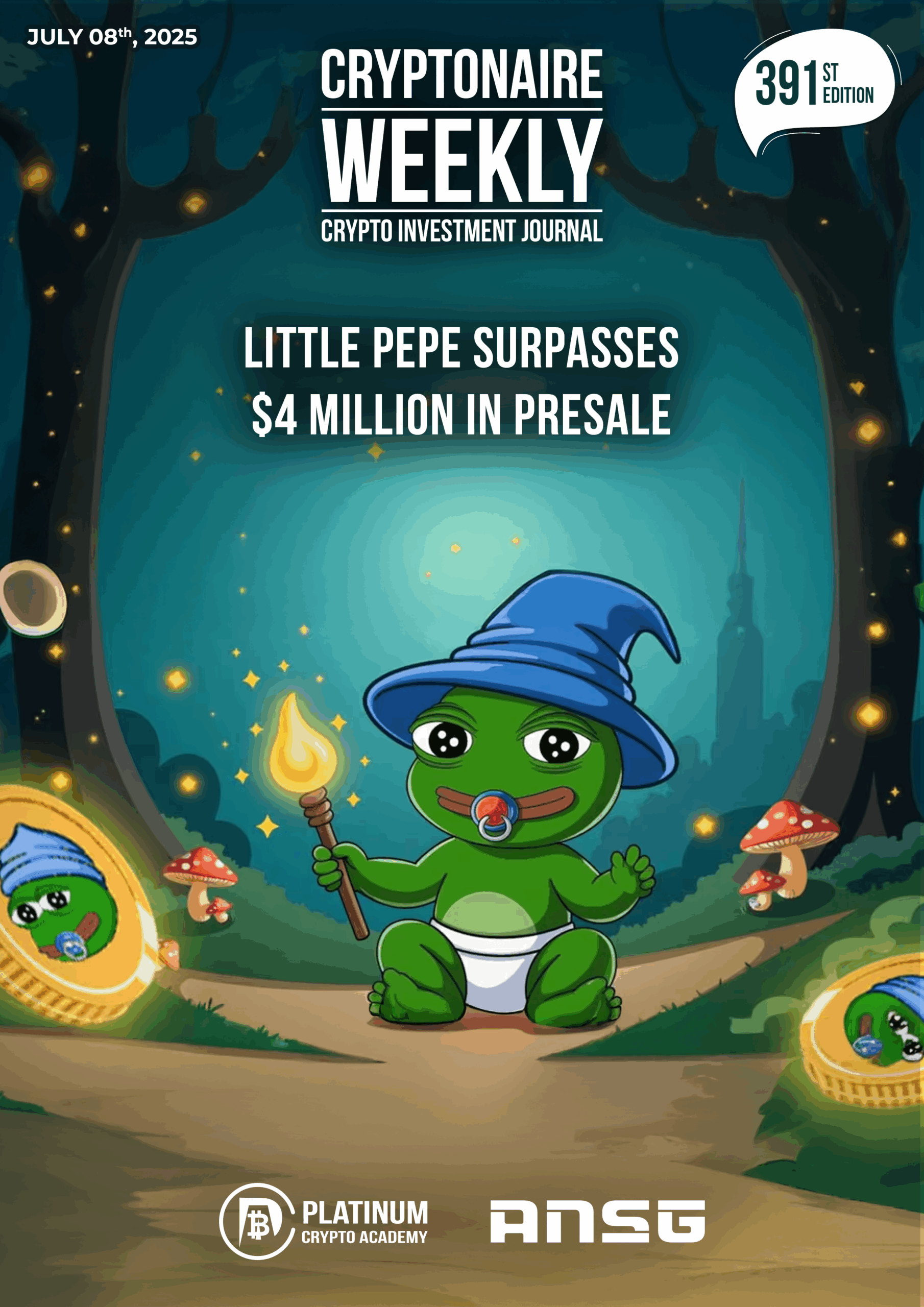After watching Charles Hoskinson speak about Cardano and the broader crypto landscape, I can’t help but feel a deep sense of conviction about the direction he’s taking the project. It’s not just the technical aspects of Cardano that stand out to me it’s the philosophy behind it. Hoskinson has always framed Cardano as more than just a cryptocurrency. Listening to him, you get the sense that he’s trying to reshape how societies operate, how governance functions, and how we, as individuals, interact with the systems around us.
I’ve been involved in the crypto space for years, and one of the key takeaways for me is that adoption doesn’t come when everything is going well. It’s not during times of economic stability that people rush toward cryptocurrencies. Instead, it’s when systems are failing, when inflation is rampant, and when trust in traditional institutions erodes. Hoskinson touches on this idea with clarity. His message about cryptocurrencies being adopted when things start falling apart hits home for me, especially given the current state of the world.
Cardano: Building for the Long Term
What strikes me most about Hoskinson’s vision is his emphasis on long-term thinking. While many projects in the crypto space are focused on short-term gains, quick adoption, and flashy developments, Cardano is playing the long game. Hoskinson’s belief that Cardano will eventually surpass Ethereum and perhaps even Bitcoin might sound bold, but when he explains it, you start to see the rationale behind it. Cardano isn’t about rushing development; it’s about building a solid foundation that can last for decades.
Hoskinson points out that since its launch, Cardano has grown into an 11-figure network with millions of users, and it has one of the largest research-driven development teams in the space. This isn’t a project fuelled by hype alone. It’s a well-thought-out, methodical approach to solving the challenges that blockchain technology faces scalability, governance, and decentralization. The way he envisions Cardano eventually powering governments and economies gives me a sense of how transformative this project could be in the long run.
It’s easy to get caught up in the daily price movements or the latest headlines in the crypto space, but Hoskinson’s approach is different. He’s thinking 10, 20, even 30 years down the line. And in a space as volatile as crypto, that kind of patience and focus stands out.
The Middlemen Problem: Why Decentralization Matters
Hoskinson’s critique of centralized tech giants Google, Microsoft, Amazon resonates with me. These companies have become the gatekeepers of the digital world, controlling our data, our media, and even our financial systems. It’s not just about having control; it’s about how these entities have become too powerful, too entrenched in the fabric of society. Listening to Hoskinson talk about how Cardano and other decentralized technologies can challenge this dominance, I feel a renewed sense of why blockchain matters.
He’s right when he says that these companies are the middlemen of the digital age. They control the infrastructure, the data pipelines, and the operating systems. In some ways, they have more power than nation-states. For me, this is one of the reasons why blockchain is so revolutionary it cuts out the middlemen and gives power back to individuals and communities.
Cardano’s focus on governance and decentralization is its way of addressing these issues. It’s not just about removing the middlemen for the sake of it it’s about creating systems that are more transparent, more accountable, and more secure. In a world where trust is in short supply, that kind of vision is exactly what’s needed.
The Bigger Picture: Bitcoin ETFs and Institutional Accumulation
Something else that stuck with me from Hoskinson’s talk was the broader economic picture. He mentions how institutions are now accumulating Bitcoin at unprecedented levels. It’s a reminder that while retail investors may still be uncertain, the big players banks, ETFs, and financial elites are positioning themselves for a world where cryptocurrency plays a central role. It’s hard not to feel a sense of urgency when you realize that the elites are preparing for a future many aren’t fully ready for yet.
Hoskinson makes a point about how central banks have been printing money since the 2008 financial crisis, leading to inflation and weakening trust in traditional fiat systems. It’s a scenario I’ve watched unfold, and it’s clear that cryptocurrencies like Bitcoin and to some extent, Cardano are becoming the hedge against this system. People are looking for alternatives, and I believe that Cardano, with its research-backed approach, could be one of those alternatives.
Cardano’s Future: Will It Surpass Ethereum and Bitcoin?
Hoskinson’s confidence in Cardano surpassing Ethereum and even Bitcoin might sound far-fetched to some, but there’s something about his certainty that feels grounded. Cardano’s progress since its inception has been impressive, but it’s not just the growth in users or the market cap that matters. It’s the underlying infrastructure that Cardano is building the governance models, the scalability solutions, and the partnerships it’s forming with governments and institutions.
Personally, I’m excited about where Cardano is headed. It’s not just about dethroning Ethereum or Bitcoin; it’s about creating a blockchain that can truly scale and support the needs of the future. Hoskinson’s belief that governments will eventually run on Cardano’s infrastructure might seem ambitious, but given the project’s track record, I’m inclined to think it’s not outside the realm of possibility.
My Takeaway: Charles Hoskinson’s Vision Is Worth Betting On
As someone who’s been in the crypto space for a while, I’ve seen projects come and go. I’ve seen hype cycles inflate and burst. But what Charles Hoskinson and Cardano are building feels different. It’s not about riding the next wave of excitement it’s about creating something sustainable, something that can last.
After hearing him speak, I’m more convinced than ever that Cardano is a project worth keeping a close eye on. It’s not just about price gains or market cycles; it’s about the broader vision for decentralization, governance, and reshaping how we interact with our systems. Hoskinson’s speech left me with a sense of optimism for the future of Cardano, and I’m excited to see where the project goes from here.
The next decade will be critical, and if Hoskinson’s predictions come true, we could be looking at a world where Cardano powers not just financial transactions but entire governments. That’s the kind of long-term vision that keeps me invested, not just financially but intellectually. And that’s what I think makes Cardano truly special.
Hopefully, you have enjoyed today’s article. Thanks for reading! Have a fantastic day! Live from the Platinum Crypto Trading Floor.
Earnings Disclaimer: The information you’ll find in this article is for educational purpose only. We make no promise or guarantee of income or earnings. You have to do some work, use your best judgement and perform due diligence before using the information in this article. Your success is still up to you. Nothing in this article is intended to be professional, legal, financial and/or accounting advice. Always seek competent advice from professionals in these matters. If you break the city or other local laws, we will not be held liable for any damages you incur.


